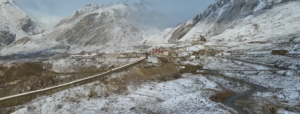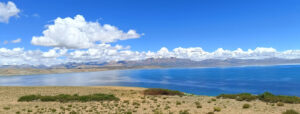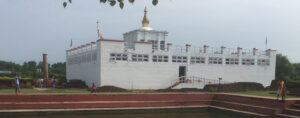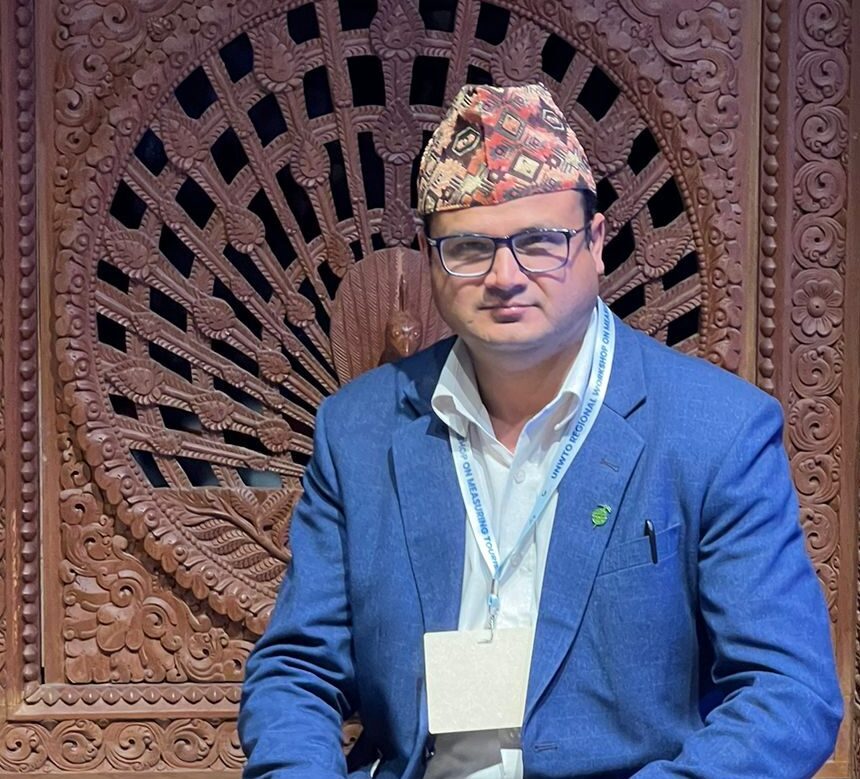Phewa Lake is the second-largest lake in Nepal and one of the most popular tourist destinations in the country. This beautiful lake is located in the valley of Pokhara, a city situated about 200 kilometers west of Kathmandu.
The lake covers an area of about 4.4 square kilometers and has a maximum depth of around 28 meters. The shape of Phewa Lake somewhat resembles a human kidney, with the northern part being wider and the southern part narrower.
Highlights of Phewa Lake
Hotels, restaurants, boathouses, and shops line the lake’s shoreline, catering to domestic and international visitors. They come to enjoy the scenic beauty of the lake and its surroundings. Popular activities include boating, fishing, and simply strolling along the lakeside.
The lake is also culturally significant, with several Hindu temples and shrines located on its shores or on the small islands within the lake itself. The most famous of these temples is the Barahi Temple, a two-story pagoda located in the middle of the lake on its tiny island.

With its pristine waters reflecting the majestic Annapurna mountain range in the background, Phewa Lake offers an idyllic and picturesque setting that draws visitors from all around the world to experience its tranquil charm.
The Lakeside Landscape
Phewa Lake is a place of natural beauty. The Sarangkot and Kaskikot hills encircle the lake. A pagoda-style temple called Barahi Mandir stands at Phewa Lake’s center, surrounded by trees. You can see the stunning attractions and views of the Machhapuchre and Annapurna ranges in the crystal-clear water of the lake. You will love seeing all the beautiful things while boating. Phewa Lake is a great source of recreation and can be best experienced.
Phewa Lake is the traveler’s focal point in Pokhara. The glaring tourist development of Lakeside The lush Rani Ban, or Queen Forest, presents a beryl hue to the lake.
Also Read: Annapurna Round Trek – with Tilicho Lake
Many travelers walk or cycle around the lakeshore. The trek up to the World Peace Pagoda affords breathtaking views over the lake and the mountains beyond.
You can enjoy activities like paragliding, water sports, and the usual yoga, reiki, and massages on the lakeside road, but it is not a genuine aspect of the place. If you attempt to think outside the box of tourist areas, you will be able to discover mind-blowing scenery and welcome people to have memorable experiences.
The Best Time to Visit Phewa Lake
The climate around Phewa Lake is like much of Nepal. It is mostly influenced by the monsoon cycle, presenting distinct seasons that each offer a unique cultural experience of the region.
The months that will be best to visit during the autumn months are September and November. During this time, the weather is typically dry and clear with moderate temperatures, providing excellent conditions for sightseeing and outdoor activities. The visibility is at its best, offering unhampered views of the Annapurna ranges reflected in the lake’s calm water.
During winter, from December to February, this time presents cooler weather with the possibility of foggy mornings that can obscure mountain views. The afternoons become sunny and enjoyable. The lakes have a tranquil charm, with fewer tourists around.
In spring, it spans from March to May. It is another favorable time to visit. The temperatures are comfortably warm. The countryside is vibrant with blooming flowers, including the rhododendron, the national flower of Nepal. As the pre-monsoon seasons progress, occasional rain showers and thunderstorms can occur.
The monsoon season is from June to August. The least ideal time to visit a lake. Heavy rainfall can lead to muddy trails, increased insects, and leeches in the surrounding forests. The humidity is high, and the persistent clouds often hide the mountains through the rain, bringing a lush, green landscape to life.
Festivals and Events
This region is culturally rich, and various festivals and events are celebrated each year. One of the most significant events is the Phewa Lake New Year in mid-April. Vibrant boat races, live music, and cultural programs mark this event, showcasing local traditions and community spirit.
The notable Teej festival is in late September. This festival is celebrated all over Nepal. At this festival, the women wear dresses in beautiful red sarees and celebrate with singing, dancing, and fasting in honor of the Hindu goddess Parvati and marital bliss.
You may also like: All About Pokhara Street Festival
Hindus throughout the country celebrate Dashain in October, the longest festival in the Nepalese calendar. During Dashain, you can witness kite flying, traditional swings, and various ritual celebrations around the lake.
Tihar festivals follow after the Dashain in late October or early November. Lamps, candles, and colorful decorations adorn homes and businesses around the lake, creating a charming spectacle at night.
Visitors will be blessed by the fact that these festivals provide unique cultural experiences. They can also affect transportation, accommodation availability, and the opening hours of local businesses. So do visit the beautiful destinations of the Nepal Phewa Lake.
Let our expert team at Asian Heritage Treks and Travel take care of everything — from guided tours to personalized packing tips and travel arrangements.
Plan My Nepal Trip







